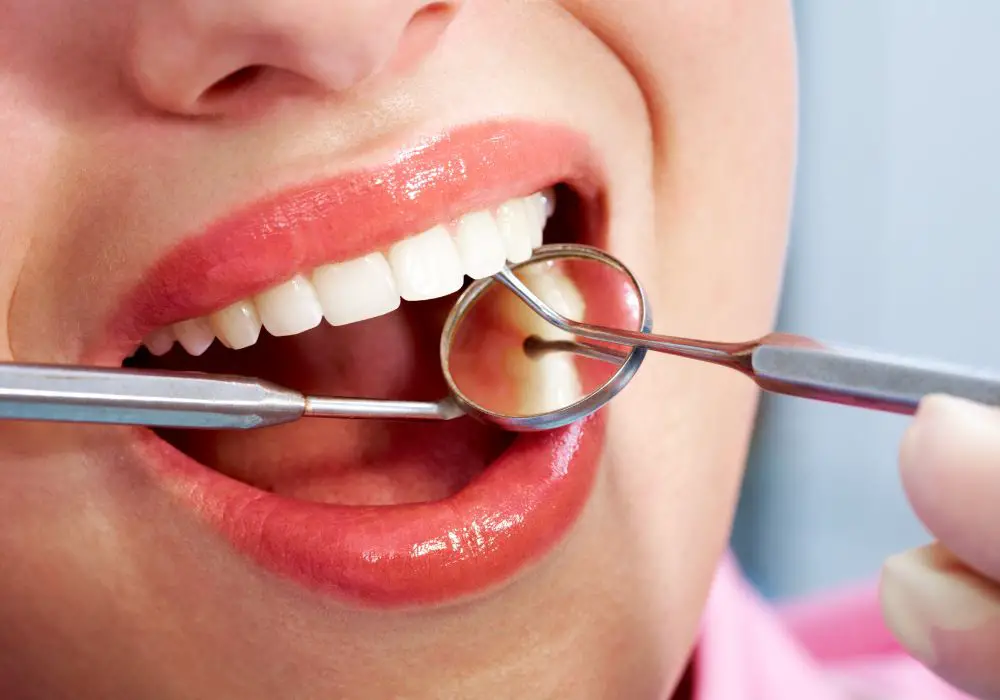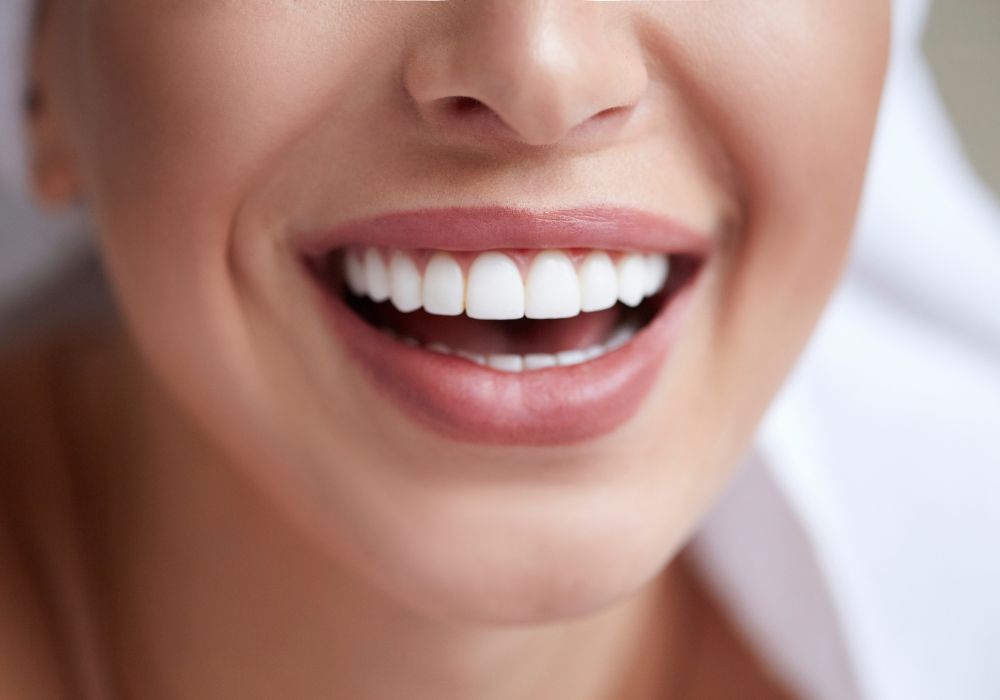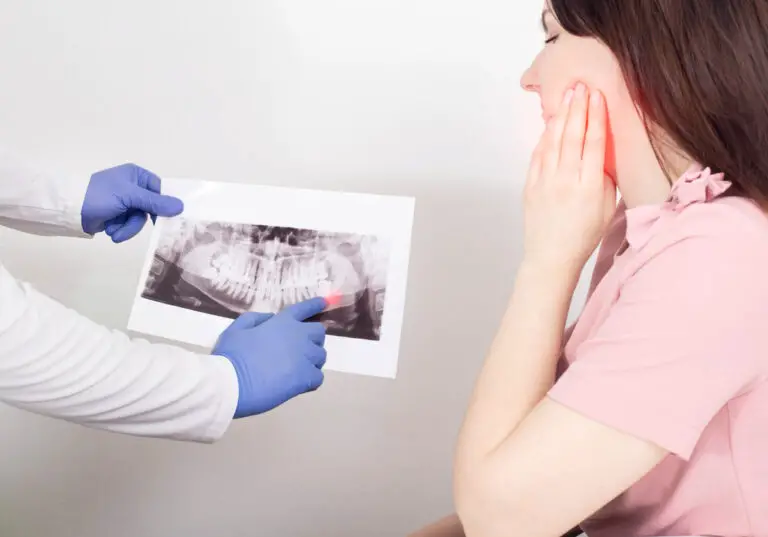Dental ridges, or mamelons, are the small bumps or ridges that appear on the edges of newly erupted teeth. While these ridges typically wear down over time, some people may notice that their front teeth still have noticeable ridges. This can be concerning, but it’s important to understand that dental ridges are a normal part of tooth development and may not necessarily indicate a problem.
Understanding dental ridges is key to understanding why they may still be present in adult teeth. These ridges are formed during tooth development and are caused by the way the different lobes of dental tissue come together to form a single tooth. While these ridges are typically worn down through normal use over time, some people may retain them into adulthood due to a variety of factors, including genetics, tooth grinding, and poor oral hygiene.
While dental ridges are generally harmless, they can sometimes be a sign of underlying dental problems. If you’re concerned about the appearance of ridges on your teeth, it’s important to speak with your dentist to rule out any potential issues. With proper care and attention, however, you can maintain good oral health and keep your teeth looking their best.
Key Takeaways
- Dental ridges are a normal part of tooth development and may not necessarily indicate a problem.
- Dental ridges can be caused by genetics, tooth grinding, and poor oral hygiene.
- If you’re concerned about the appearance of ridges on your teeth, speak with your dentist to rule out any potential issues.
Understanding Dental Ridges

Dental ridges are the small bumps or ridges that can be found on the edges of your teeth. These ridges are also known as mamelons and are most commonly found on the front teeth. They are a normal part of tooth development and are typically present in children and young adults.
During tooth development, teeth form from separate lobes. Each of these lobes contributes to the formation of the tooth’s surface and can result in the formation of ridges. Most teeth have at least four lobes, but some teeth can develop from more than that.
While dental ridges are a normal part of tooth development, they can sometimes cause cosmetic concerns. Some people may find that their dental ridges are more prominent than others, which can affect the appearance of their smile. In some cases, dental ridges can also wear down over time, which can result in a flatter or more rounded tooth surface.
It’s important to note that dental ridges do not typically cause any functional problems with your teeth. They are simply a cosmetic concern for some people. If you are concerned about the appearance of your dental ridges, you can speak to your dentist about potential treatment options.
The Role of Genetics in Dental Ridges
Dental ridges, also known as mamelons, are small bumps or ridges on the edges of teeth. They are most commonly found on the front teeth, and can be present in both children and adults. While dental ridges are generally harmless, some people may find them aesthetically unappealing and wish to have them removed.
The presence of dental ridges is largely determined by genetics. A study by the National Institute of Dental and Craniofacial Research Genetics found that more than 700 of the approximately 5,500 known genetic disorders in humans are craniofacial disorders, which can affect the development of teeth and jaws. This means that some people may be more likely to have dental ridges due to their genetic makeup.
It is important to note, however, that genetics is not the only factor that can contribute to the development of dental ridges. Other factors, such as tooth grinding, can also cause wear and tear on the edges of teeth, resulting in the appearance of ridges.
While dental ridges are generally harmless, it is important to consult with a dentist if you are concerned about the appearance of your teeth. Your dentist can examine your teeth and recommend the best course of action, which may include smoothing out the ridges or other cosmetic procedures.
The Function of Dental Ridges

Dental ridges, also known as mamelons, are small bumps or ridges that appear on the edges of teeth. These ridges are typically found on the front teeth and are most noticeable in children and young adults. While some people may find the ridges unsightly, they actually serve an important function in dental health.
One of the primary functions of dental ridges is to help with biting and chewing. The ridges provide additional surface area for the teeth to grip and chew food, making it easier to break down and digest. This is especially important for young children who are still developing their chewing skills.
In addition to aiding in chewing, dental ridges can also help protect the teeth from damage. The ridges act as a buffer between the teeth and any hard or abrasive foods that are being chewed. This can help prevent chips, cracks, and other types of damage to the teeth.
Finally, dental ridges can also play a role in the development of the teeth. The ridges are formed during the tooth development process and can provide important clues to dentists and orthodontists about how the teeth are growing and developing. By examining the ridges, dental professionals can identify any potential issues with tooth alignment or development and take appropriate action to correct them.
Overall, while dental ridges may not be the most aesthetically pleasing feature of the teeth, they serve an important function in dental health and development. By providing additional surface area for chewing, protecting the teeth from damage, and aiding in tooth development, dental ridges play an important role in maintaining healthy teeth and a healthy smile.
Why Ridges Remain in Adult Teeth
Tooth Development
During tooth development, teeth grow from separate lobes that eventually fuse together to form the mature tooth. The lobes create the ridges that are initially present on the teeth. As the teeth are used for biting and chewing, the ridges wear down over time, resulting in a smoother surface. However, some teeth may not wear down completely, leaving visible ridges on the teeth.
Dental Health Factors
There are several factors that can contribute to the persistence of ridges on adult teeth. Poor dental hygiene can lead to the buildup of plaque and tartar, which can cause the ridges to become more pronounced. Grinding or clenching of the teeth can also cause the ridges to remain, as the constant pressure on the teeth can prevent them from wearing down naturally.
Additionally, certain medical conditions or medications can affect tooth development and result in the persistence of ridges on adult teeth. For example, if a person has a calcium deficiency during tooth development, it can cause the enamel to form abnormally and result in the formation of ridges on the teeth.
Overall, the persistence of ridges on adult teeth is generally not a cause for concern and does not typically require treatment. However, if a person is unhappy with the appearance of their teeth, cosmetic dental procedures such as bonding or veneers can be used to smooth out the ridges and create a more even appearance.
Ridges and Oral Health

Importance of Ridges
The ridges on our teeth, also known as mamelons, are a natural part of our teeth’s development. Mamelons are most commonly found on the incisor teeth, which are the front teeth that we use to bite and cut our food. These ridges are formed during the development of the tooth and are usually worn down over time through natural use.
While having ridges on your teeth is not necessarily a cause for concern, it is important to keep them in mind when it comes to your oral health. Ridges can make it more difficult to clean your teeth properly, which can lead to a buildup of plaque and bacteria. This buildup can then lead to tooth decay and gum disease if left untreated.
Impact on Oral Hygiene
To maintain good oral hygiene, it is important to brush your teeth at least twice a day and floss daily. However, with ridges on your teeth, it can be difficult to reach all of the surfaces of your teeth with a toothbrush or floss. This can lead to plaque buildup in the crevices of your teeth, which can eventually lead to tooth decay and gum disease.
To combat this issue, it is important to pay extra attention to the areas of your teeth with ridges when brushing and flossing. You may also want to consider using an interdental brush or water flosser to help clean these hard-to-reach areas.
In summary, while ridges on your front teeth are a natural part of tooth development, they can impact your oral hygiene if not properly maintained. It is important to pay extra attention to these areas when brushing and flossing to prevent plaque buildup and maintain good oral health.
When to Seek Dental Advice
If you have noticed ridges on your front teeth, you may wonder if it is normal or if it requires treatment. While mamelon bumps are usually harmless, in some cases, they can indicate a more serious dental issue. Here are some signs to look out for and when to seek dental advice.
Signs of Concern
If you notice any of the following signs, you should seek dental advice:
- Pain or sensitivity when eating or drinking
- Discoloration of the teeth
- Swelling or inflammation of the gums
- Bleeding gums
- Loose teeth
- Bad breath or a bad taste in your mouth
If you experience any of these signs, it may be an indication of tooth decay, gum disease, or other dental issues. It’s essential to seek dental advice promptly to prevent further damage to your teeth and gums.
Professional Assessment
If you are concerned about the ridges on your front teeth, it’s best to consult with a dental professional. Your dentist can examine your teeth and gums and determine whether the ridges are normal mamelons or a sign of a more serious dental issue.
During your dental appointment, your dentist may perform a visual examination, take x-rays, or perform other diagnostic tests to determine the cause of the ridges. Based on their findings, they may recommend treatment options such as dental fillings, root canal therapy, or gum disease treatment.
In summary, if you notice any signs of concern or are unsure about the ridges on your front teeth, it’s best to seek dental advice. A dental professional can provide a proper diagnosis and recommend the best course of treatment to maintain your oral health.
Frequently Asked Questions
How to get rid of mamelons teeth
Mamelons teeth are usually harmless and don’t require treatment. However, if you’re bothered by their appearance, you can talk to your dentist about smoothing them out. This can be done with a dental drill or sandpaper disk.
Mamelon teeth adults
Mamelon teeth can occur in both children and adults. They are more common in children as their teeth are still developing. However, some adults may still have mamelon teeth, and it’s nothing to worry about.
How much does it cost to get rid of mamelons
The cost of getting rid of mamelon teeth can vary depending on the severity of the ridges and the method used to smooth them out. It’s best to consult with your dentist to get an accurate estimate.
Vertical ridges on teeth
Vertical ridges on teeth can be caused by a variety of factors, including genetics, tooth grinding, and poor dental hygiene. It’s important to see your dentist if you notice any unusual ridges on your teeth.
Bumpy teeth surface
A bumpy teeth surface can be caused by a variety of factors, including enamel hypoplasia, tooth decay, and poor dental hygiene. It’s important to see your dentist if you notice any unusual bumps on your teeth.
Do primary anterior teeth have mamelons
Yes, primary anterior teeth can have mamelon ridges, just like permanent teeth. However, they are usually less pronounced and may wear down over time as the child grows.







